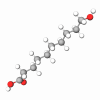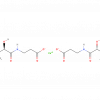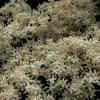DNA has a double helical structure, the strands twisting around each other as in a spiral staircase. From this structure the mechanism for replication can be readily visualized - the strands of the helix separate and the missing strand is replaced through a series of biochemical processes in the cell. It is the sequence of nucleotides in the DNA that dictates the sequence of amino acids in a protein. DNA does this by acting as a template for the production of the three different RNA intermediates.
The first class is known as messenger RNA (mRNA), the second class as transfer RNA (tRNA), and the third class as ribosomal RNA (rRNA) which participates in the actual bonding of the amino acids into the proteins found within the large cell structures known as ribosomes.
Bioplex RNA contains hydrolyzed low molecular weight fragments of Ribonucleic Acid (RNA) and Deoxyribonucleic Acid (DNA). It contains the 3 covalently bonded components of RNA and DNA; heterocyclic bases, a five-carbon sugar, and phos-phates.
Nucleic Acids, so-called because they were first isolated from cell nuclei about 100 years ago, are of two general types: RNA and DNA. Like proteins and polysaccharides, nucleic acids are huge molecules. Each nucleic acid consists of either one or two chains of nucleotides. Each nucleotide, in turn, is composed of three covalently bonded units, a heterocyclic base (purines and pyrimidines), ribose or deoxyribose, and a phosphate.Bioplex RNA contains nucleotides and nucleosides which have the ability to provide skin moisturizing and tonifying effects. It is a yeast-derived, water-soluble, odorless, colorless, and easy-to-use source of RNA and DNA for cosmetics. Bioplex RNA is compatible with anionics, amphoteric, cationic, and non-ionics. Due to its low molecular weight, it may have salt-like properties, affecting the viscosity in sensitive systems such as shampoos and Carbopol-based formulas.










